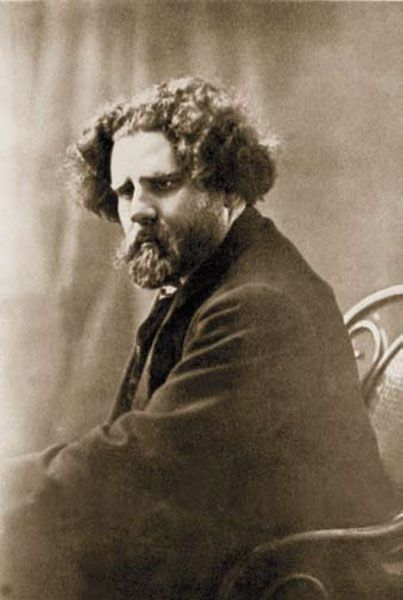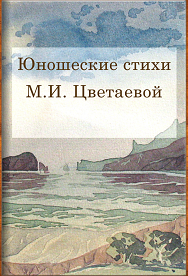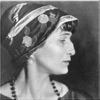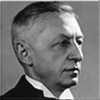Living word — living memory

E. B. Korkina
For Tsvetaeva (and not only for her; still, it was she who said it on everyone else’s behalf) Maximilian Voloshin was and remained a “Vozhatyi” (Guide) — in that enigmatic, beneficial and dangerous meaning of the word, which came into Russian life from the last Pushkin’s story.
M. I. Tsvetaeva was working on her prose memorial to M. A. Voloshin during the whole autumn of 1932, simultaneously creating a verse cycle in his memory. In October 1932, among the drafts of the first verse cycle (“Nad voronym utesom”), M. I. Tsvetaeva jotted down a small fragment of her letter to B. L. Pasternak: “Milyi Boris, ia vse goriuiu o Makse. Ne nosom v podushku, a — esli khochesh’ — nosom v tetrad’, p.ch. ot tekh slez po krainei mere khot’ chto-nibud’ ostaetsia.
Slovom: 20-letie druzhby. Slovom: bol’shaia tetrad’ Zhivoe o zhivom i riad stikhov, kontsa kotoromu ---- “ (RGALI. F. 1190. Op. 3. Ed. khr. 23. L. 36 (ob.)).
The name of the outline is versatile, which is so typical for Tsvetaeva. From the point of view of the genre, it is an obituary, a word about the dead. Formally keeping this calque (nekro—log). She replaces “log” (slovo) with an epithet —zhivoe (slovo), turning the dead, whose death caused the obituary to appear, the one sprinkled with the living water of the living word, alive, by the name of the obituary itself. The title defines as well the intrinsic Tsvetaeva’s genre of the essay: these are living pictures, living dialogues, living images of the past, which have been hitherto saved by her living memory.
M. I. Tsvetaeva’s essay was published in two issues of the leading magazine of Russian emigration — “Sovremennye zapiski”, 1933, kn. 52, 53.
The dramatic history of its publication must be covered here, as the traces of this drama are kept in the form of the document itself (excerpt), which is reproduced in this book.
Originally, the issue that turned later into a conflict between the editor and the author concerned the excessive volume of the text. The excess was really significant — by almost a third above the agreed length. The editor was not able to find extra space as the magazine could not be expanded. M. I. Tsvetaeva had had to reluctantly agree to contractions that always damaged the quality and meaning of the texts before (the most outrageous example is the publication of “Iskusstvo pri svete sovesti”, which was turned into a collection of fragments because of the editor’s cuts), but this time she decided to cross swords.
M. I. Tsvetaeva’s adversary was one of the five editors of “Sovremennye zapiski” — Vadim Viktorovich Rudnev. Her letters describe the peripeteias of this controversy featuring numerous uncomplimentary commentaries on Rudnev. It is obvious, however, that she was excessively demonizing her editor in the heat of the battle and irritation. “Rudnev byl chestneishim, mileishim, dobreishim russkim intelligentom, dvorianinom, zemskim vrachom i eserom. Kak pochti vse iz etoi sredy, on malo smyslil v iskusstve i ne vyskazyval suzhdeniia o zhivopisi i stikhakh. No proza kazalas’ emu delom prostym i nekhitrym. Voobshche literatura v Rossii ved’ tol’ko pridatok, appendiks k drugim silam, vedushchim bor’bu s proizvolom. I etot chestneishii zubr zanimalsia redaktirovaniem edinstvennogo v emigratsii tolstogo zhurnala” (V. S. Ianovskii. Polia Eliseiskie. N’iu-Iork: Serebrianyi vek, 1983. S. 28).
At first the two parties were trying to meet halfway, which follows from the reproduced pages of the excerpt: pages 244, 254, 256, 257 of the first issue of the magazine have dottings that mark the cuts which Tsvetaeva agreed to. As to the second part of the essay, where Rudnev was planning to shorten the final pages containing the end and apotheosis of the hero’s life (by the author’s intention), — here diamond cut diamond. The argument was joined by extraneous participants, namely M. V. Sabashnikova-Voloshina, who had sent a letter supporting the integrity of Tsvetaeva’s original text. As a result, V. V. Rudnev withdrew and the end of the essay was printed.
In the spring of 1938, on the edge of her inevitable departure from the USSR, M. I. Tsvetaeva started arranging her archive of handwritten materials. During this work she prepared two sets of magazine excerpts of “Zhivoe o zhivom” with corrections of misprints and restoration of the manuscript fragments excluded from the publication — these insertions made up 20 typewritten pages. One set of excerpts with her inclusions was sent to V. F. Bulgakov in Prague, for the Russian cultural and historical museum created by him. This set is reproduced in this edition. On the cover, where V. F. Bulgakov placed the excerpts one can see the stamp of the museum and the date of acquisition written down by V. F. Bulgakov — September 25, 1938. The identical second set was brought by M. I. Tsvetaeva to Moscow. At present, both of them are kept in RGALI (F. 1190. Op. 2. Ed.khr. 83).
After Tsvetaeva’s death the essay “Zhivoe o zhivom” has been republished many times, unfortunately, all editions containing various mistakes. This is the more regrettable that the history of the first publication revealed the author’s wish to protect her creation by all possible means. It is amazing that on the occasion of the centenary of M. A. Voloshin’s house museum readers will be able to obtain the original text of Marina Tsvetaeva’s essay about Maximilian Voloshin, which has not been distorted by anybody’s interference.

























